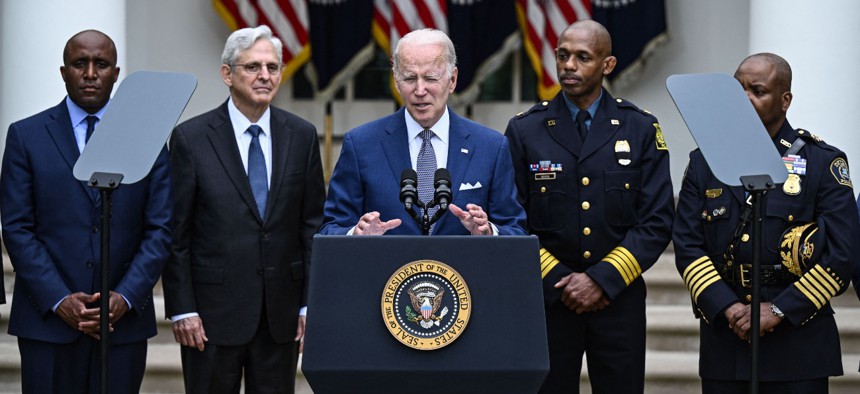The White House Chronicles Equity Efforts in the American Rescue Plan
The purpose is not to say, “mission accomplished,” but to continue sharing information and hearing what isn’t working, a senior White House official says.
The Biden administration laid out how it has advanced equity so far with the $1.9 trillion relief package the president signed into law in March 2021.
The American Rescue Plan Implementation Team and the Domestic Policy Council released a 301-page interim report Tuesday on 32 different programs from the American Rescue Plan, which represents about 60% of the budgeted funds. The package delivered relief for the COVID-19 pandemic and its resulting economic recession.
The report looks at the design and implementation of the American Rescue Plan “to ensure that this first major legislation lives up to President Biden’s executive order on promoting equity,” a senior White House official said during a background briefing call for reporters. While other presidents, such as Clinton and Obama, have focused on equity, “what President Biden did on day one was made us zero in on equity at initial implementation” of programs and legislation.
The report details how implementation of the American Rescue Plan has worked to achieve equity through decreasing unemployment among people of color, reducing child poverty, helping small businesses, providing housing assistance, keeping schools open safely, reducing health disparities, investing in Tribal communities and more.
For example, “under the 2020 round of economic relief, while millions of small businesses received support to stay afloat and keep employees on the payroll, too many minority-and women-owned businesses and ‘mom and pops’ found themselves at the end of line while larger, well-connected businesses were able to access relief funds first,” in addition to facing “existing systemic inequities,” the report stated. Policy changes from the Biden administration “ensured that the 2021 round of the PPP—which consisted of more than $271 billion in forgivable loans to nearly 6.4 million businesses—reached more of the smallest businesses and those located in [low- and moderate-income] communities.”
Part of the efforts to distribute enhanced child tax credits included the launch of childtaxcredit.gov, “a one-stop shop in English and Spanish for families to sign up for the CTC while working with non-profit and advocacy communities to mobilize outreach and tax filing assistance across the country” as well as launch of the first ever non-filer portal for the child tax credits, a fact-sheet from the White House stated.
In addition to recapping the administration’s achievements the report also includes a learning agenda, “which is intended to formulate questions that agencies are attempting to address through rigorous data analysis and collection and experimental design,” said a second senior White House official. It’s not just meant for federal agencies, but also those in state and local governments, academia and other stakeholders.
“We put this report out now not to say we’re done or mission accomplished, but the opposite: to continue the process of sharing information, hearing what is working, but also hearing what isn’t working,” said the first senior White House official.






